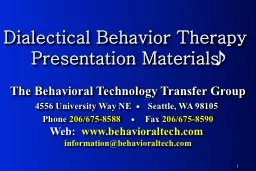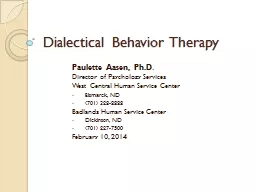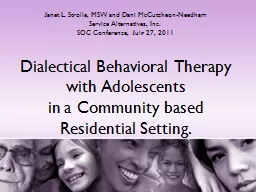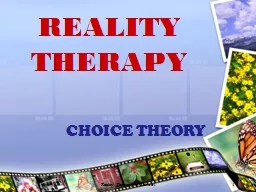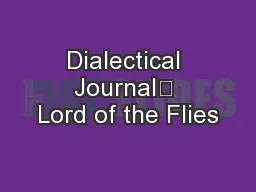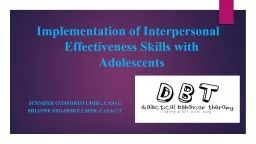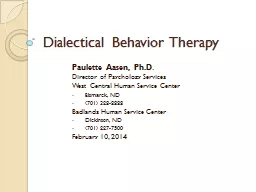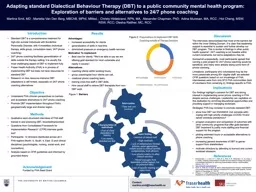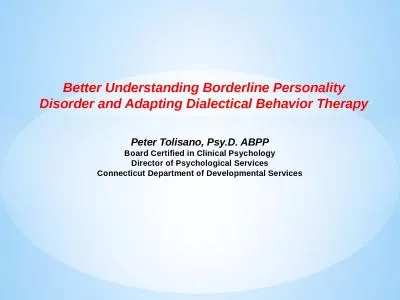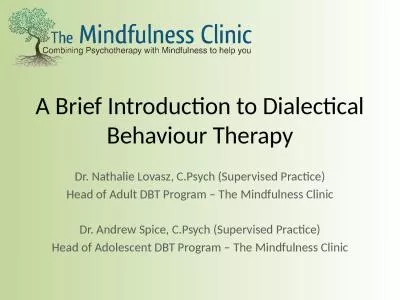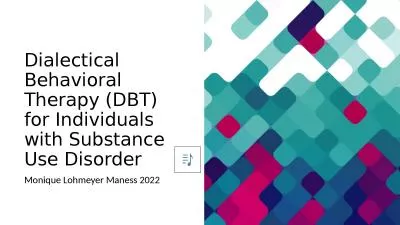PPT-Dialectical Behavior Therapy Presentation Materials
Author : giovanna-bartolotta | Published Date : 2017-04-10
The Behavioral Technology Transfer Group 4556 University Way NE l Seattle WA 98105 Phone 2066758588 l Fax 2066758590 Web wwwbehavioraltechcom informationbehavioraltechcom
Presentation Embed Code
Download Presentation
Download Presentation The PPT/PDF document "Dialectical Behavior Therapy Presentatio..." is the property of its rightful owner. Permission is granted to download and print the materials on this website for personal, non-commercial use only, and to display it on your personal computer provided you do not modify the materials and that you retain all copyright notices contained in the materials. By downloading content from our website, you accept the terms of this agreement.
Dialectical Behavior Therapy Presentation Materials: Transcript
Download Rules Of Document
"Dialectical Behavior Therapy Presentation Materials"The content belongs to its owner. You may download and print it for personal use, without modification, and keep all copyright notices. By downloading, you agree to these terms.
Related Documents

